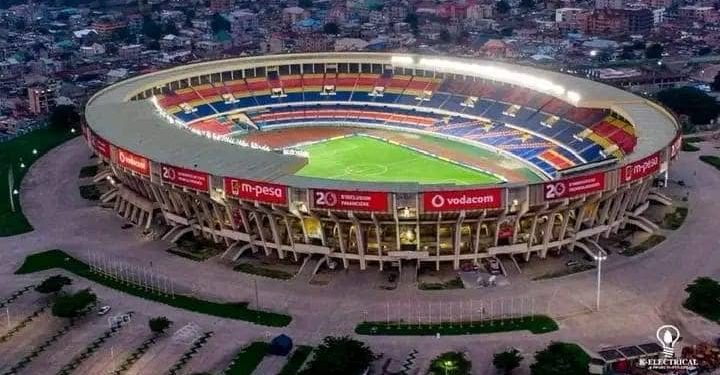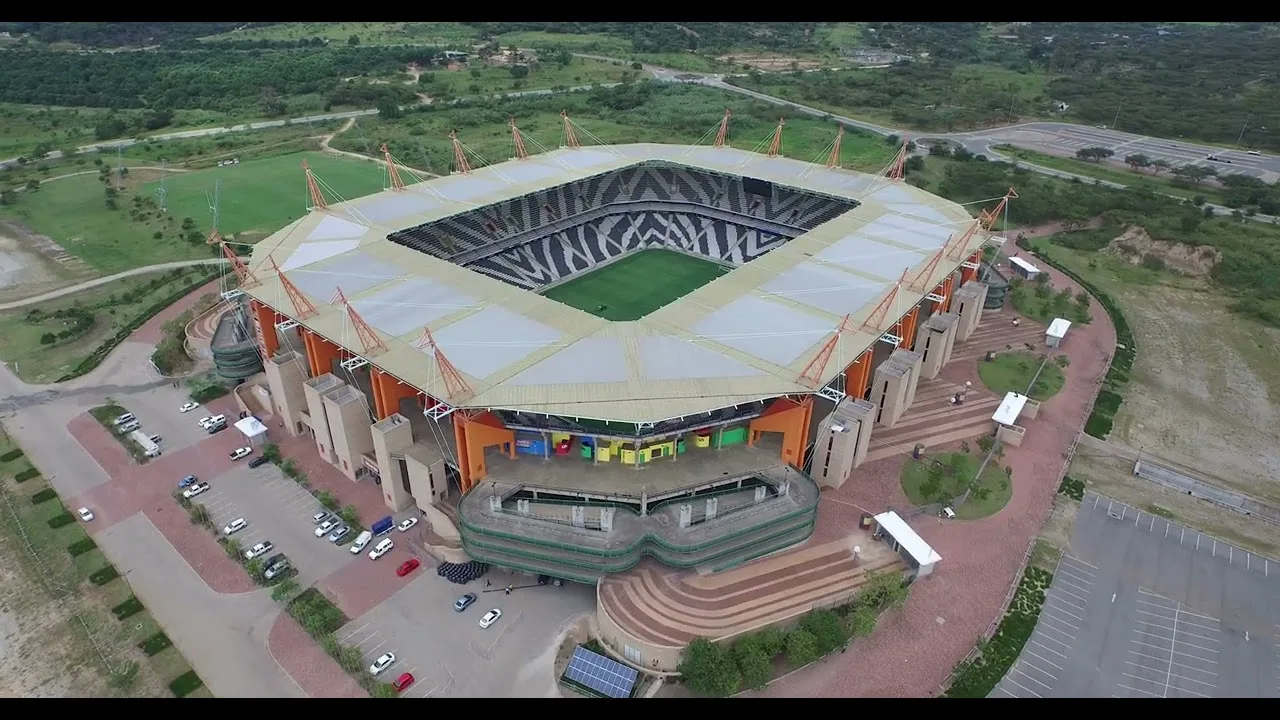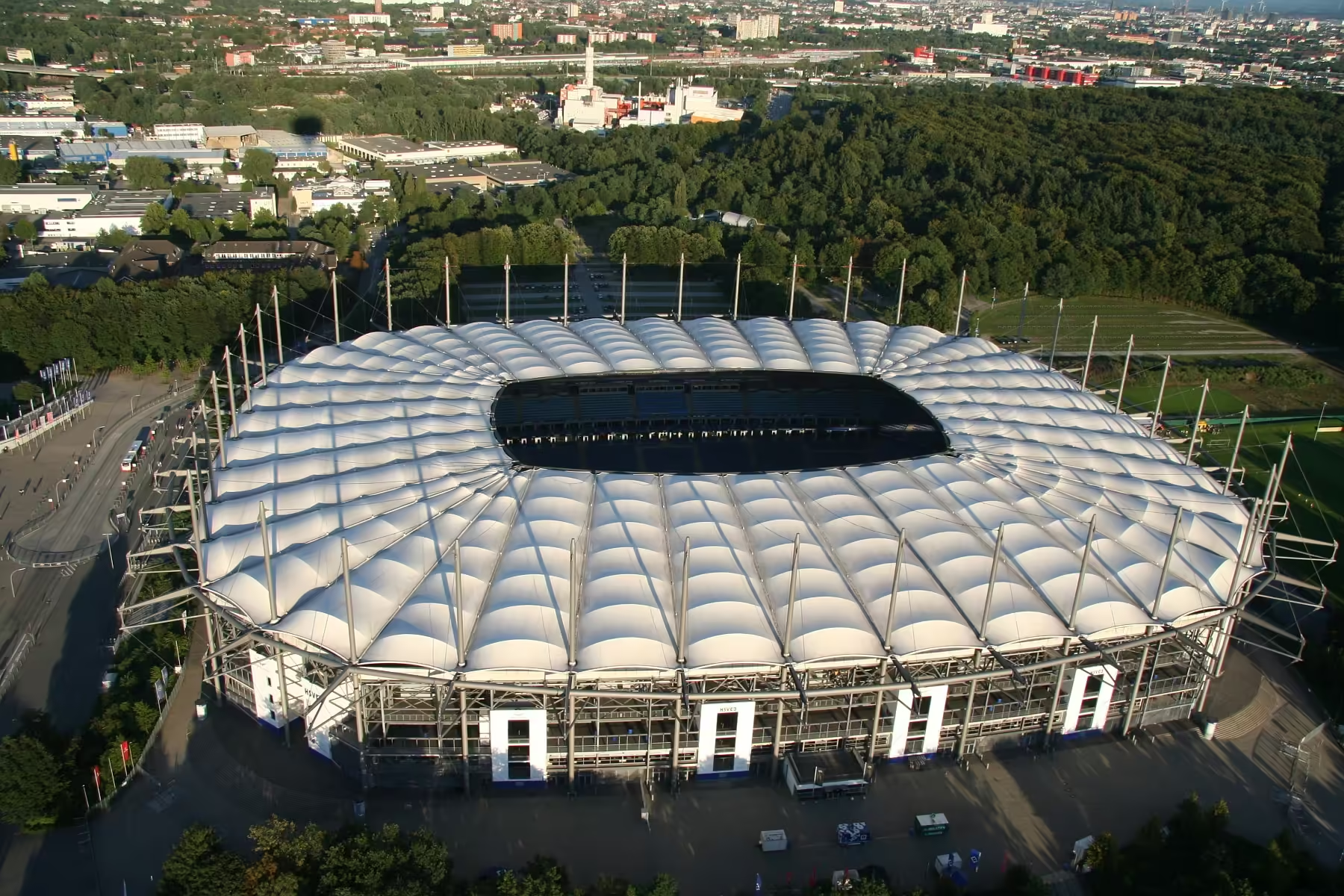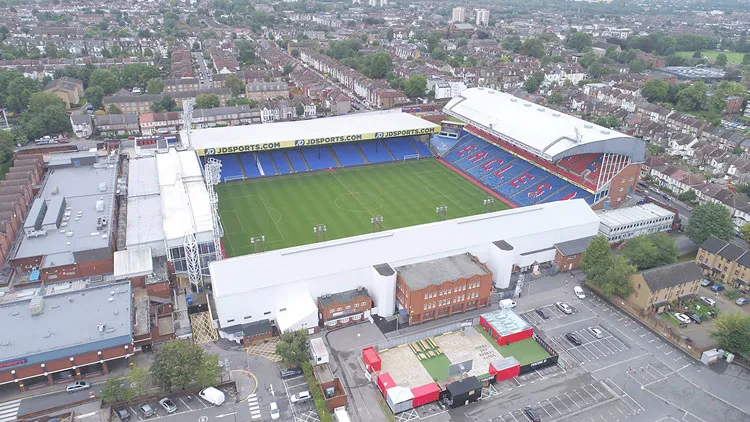Stade des Martyrs de la Pentecôte, often simply known as Stade des Martyrs, is the national stadium of the Democratic Republic of the Congo (DRC). Located in the capital city of Kinshasa, it stands as a monument to the nation’s passion for football and its turbulent history. With a seating capacity of 80,000, it is the largest stadium in the DRC and the fourth-largest in Africa. It is the home stadium for the Congolese national football team, AS Vita Club, and DCMP, making it a versatile venue for national and club-level events.
Stade des Martyrs de la Pentecôte, located in Kinshasa, Democratic Republic of the Congo (DRC), began construction in 1988 and has since become a versatile venue for various events, including athletics, boxing, concerts, football, and religious gatherings. The stadium has seen football matches with attendances exceeding 100,000, a testament to its significant capacity and popularity. However, this popularity has sometimes led to tragedy, such as in 2022, when a concert by the renowned African singer Fally Ipupa N’simba ended in a stampede that claimed the lives of 11 people.
The Stadium’s Historical Background
The Original “Stade Kamanyola”
The stadium’s story began with its original name, “Stade Kamanyola,” inspired by the Kamanyola region in South Kivu Province. This region became famous in 1964 when Mobutu Sese Seko’s Forces Armées Zaïroises (FAZ) won a crucial victory against the Mulelist insurgency and captured the Kamanyola Bridge. To commemorate this triumph, Mobutu named his extravagant yacht and a military division after Kamanyola, and he later commissioned the construction of “Stade Kamanyola.” Work on the stadium began on October 14, 1988, and concluded five years later, with an official inauguration on September 14, 1994. It replaced the former National Stadium, Stade Tata Raphaël, and quickly became the premier sports venue in Kinshasa.
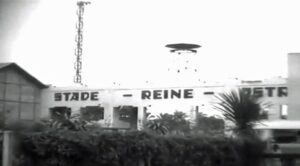
From “Stade Kamanyola” to “Stade des Martyrs de la Pentecôte”
Stade des Martyrs was initially called “Stade Kamanyola,” a name with roots in the Kamanyola groupement of the Walungu Territory in South Kivu Province. The name commemorates Mobutu Sese Seko’s victory over the Mulelist insurgency in 1964 when his Forces Armées Zaïroises (FAZ) captured the Kamanyola Bridge. Mobutu, known for his grandiose projects, commissioned the construction of Stade Kamanyola in 1988, and it took five years to complete, officially opening in 1993 with a friendly exhibition match between the Leopards of Zaire and Malawi.
The stadium’s renaming to “Stade des Martyrs de la Pentecôte” in 1997 by the Alliance des Forces Démocratiques pour la Libération du Congo-Zaïre (AFDL) marked a significant shift in its legacy. The new name honored four ministers—Évariste Kimba, Jérôme Anany, Emmanuel Bamba, and Alexandre Mahamba—who were publicly hanged in Léopoldville (now Kinshasa) on Pentecost, June 2, 1966, by Mobutu’s regime. This change symbolized the transition of power and the memory of those who suffered under Mobutu’s rule.
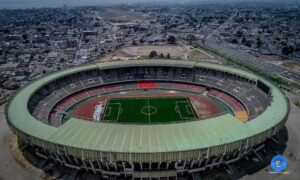
Controversial Moments and Tragedy
However, the stadium’s history also includes tragic events. In 1998, during a football match between AS Vita Club and Motema Pembe, government troops opened fire, resulting in the loss of four lives. In 2012, a riot following an Al-Masry vs. Al-Ahly match at the stadium caused 74 deaths and hundreds of injuries, with allegations of police refusing to open the gates, leading to a grim aftermath. Moreover, during Laurent-Désiré Kabila’s rule, the stadium was used as a prison for dignitaries of the former Mobutu regime, with reports of detainees being held in harsh conditions.
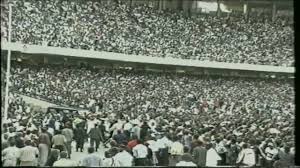
The Stadium’s Role in Modern Times
Hosting the 2023 Jeux de la Francophonie
In 2023, Stade des Martyrs gained international attention when it hosted the Jeux de la Francophonie, a multi-sport and cultural event that attracted approximately 3,000 athletes from over 40 countries. The event showcased a variety of sports, including athletics, basketball, football, wrestling, and cycling, further solidifying the stadium’s reputation as a versatile venue.

Sporting Highlights
Stade des Martyrs has hosted numerous significant events since its opening. It was the venue for the first-ever 2009 FIFA U-20 World Cup game, where Egypt defeated Trinidad and Tobago 4-1. The final of the tournament, held in Cairo, saw Ghana triumph over Brazil.
In 2004, the DRC achieved its first-ever victory over South Africa at Stade des Martyrs, a historic moment that energized the local football community.

Vita Club and Mazembe
AS Vita Club, one of the DRC’s most successful football clubs, frequently plays its home matches at the Stade des Martyrs de la Pentecôte. The club has won over 10 domestic top-flight league titles, attracting tens of thousands of spectators to their games. Similarly, Tout Puissant Mazembe, another leading Congolese football club, often plays its away matches at the stadium. In 2010, TP Mazembe made history as the first African football club to reach the FIFA Club World Cup final, though they ultimately lost to the Italian team FC Internazionale Milano.
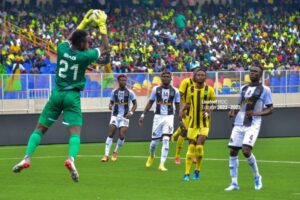
The National Football Team: Les Léopards
The national football team of the DRC, known as Les Léopards, has a rich history at Stade des Martyrs de la Pentecôte. Les Léopards were one of the first African national teams valued at over $100 million. In 1968, they won their first African championship, defeating Ghana in Ethiopia. Their second African championship title came in 1974 when they beat Zambia in Egypt.
Les Léopards also made history by becoming the first team from Sub-Saharan Africa to compete in a FIFA World Cup. Known as Zaire at the time, they played their first World Cup match in 1974 against Scotland in Dortmund, Germany. The game ended in a loss for Zaire, as did their subsequent matches against Yugoslavia and Brazil. Despite these setbacks, Les Léopards’ presence in the World Cup marked a significant milestone for African football.

Renovation and Modernization
FIFA-Driven Improvements
In response to FIFA’s recommendations, the DRC government undertook a major renovation of the stadium between 2008 and 2023 to meet international standards. The extensive overhaul included upgrades to the wardrobe facilities, sound systems, lighting, electronic marker tables, seating arrangements, press gallery, security systems, and fire safety measures. The renovation cost $15 million and involved a team of experts from the Netherlands, South Africa, and Norway. To ensure top-quality turf, the Dutch company Edell Grass brought in 140 tons of synthetic rollers and 150 tons of sand from the port of Boma to Kinshasa.
Despite these renovations, the Confederation of African Football (CAF) deemed the stadium unsuitable for hosting international matches in February 2023, pointing out deficiencies in media spaces, internet connections, press conference rooms, medical facilities, and referees’ locker rooms. The CAF also noted safety concerns with the outer perimeter, calling for further improvements before the stadium could be approved for international events. However, by April 2023, construction and site development work was approximately 80% complete, with a significant portion of the renovations successfully carried out by the Agence Congolaise des Grands Travaux (ACGT).
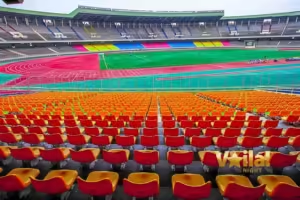
Cultural Significance and Major Events
Stade des Martyrs is not just a sporting venue; it’s also a focal point for cultural events and national gatherings. In August 2003, Wenge Musica BCBG performed to a crowd of 80,000 fans. Other notable performances include Quartier Latin International’s 30th-anniversary celebration in 2016 and a sold-out concert by Héritier Watanabe in December 2022.
In 2023, Pope Francis presided over a congregational assembly at the stadium, where he denounced tribalism and xenophobia, emphasizing the need for unity and peace. Later that year, Congolese president Félix Tshisekedi kicked off his campaign for re-election, addressing thousands of supporters at the stadium.
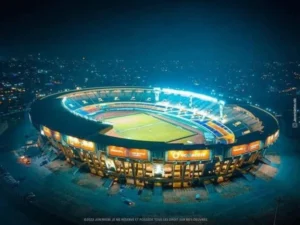
The Rumble in the Jungle
Though not held at the Stade des Martyrs, the city of Kinshasa was the setting for one of the most iconic boxing matches in history: The Rumble in the Jungle. In 1974, Muhammad Ali, formerly known as Cassius Clay, faced George Foreman in a legendary bout that drew tens of thousands of fans. Muhammad Ali’s victory solidified his status as a boxing legend, with a fanbase that eventually surpassed 10 million followers on social media.
The Future of Stade des Martyrs
As the DRC continues to invest in the modernization of Stade des Martyrs, it remains a central part of Kinshasa’s cultural and sports scene. The stadium symbolizes both the country’s turbulent past and its hope for a more unified and prosperous future. With continued renovations and a commitment to safety, Stade des Martyrs is poised to be a venue where new stories of triumph, celebration, and national pride will unfold.
Other Articles:
Also See: Borg El Arab Stadium: Egypt’s Massive Arena
Also Check: Exploring Moses Mabhida Stadium: A Landmark in Durban, South Africa
Also Check: Loftus Versfeld Stadium: A Premier Sports and Entertainment Venue
Also Check: FNB Stadium “The Calabash”: South Africa’s Colossal Venue with a Historic Legacy
Also Check: The Story of the Vitality Stadium “Dean Court”: Where Bournemouth’s Heart Beats
